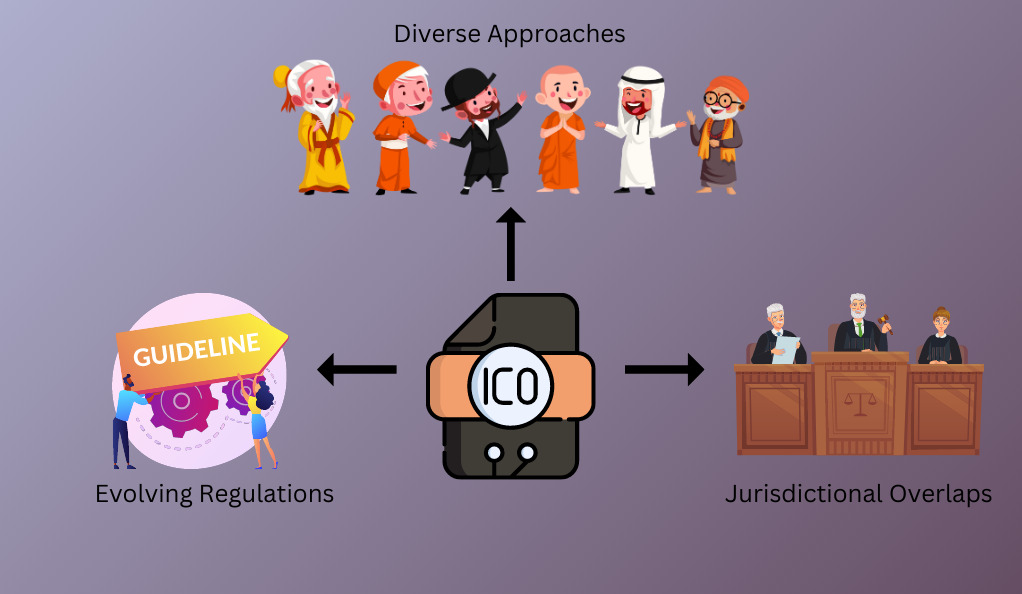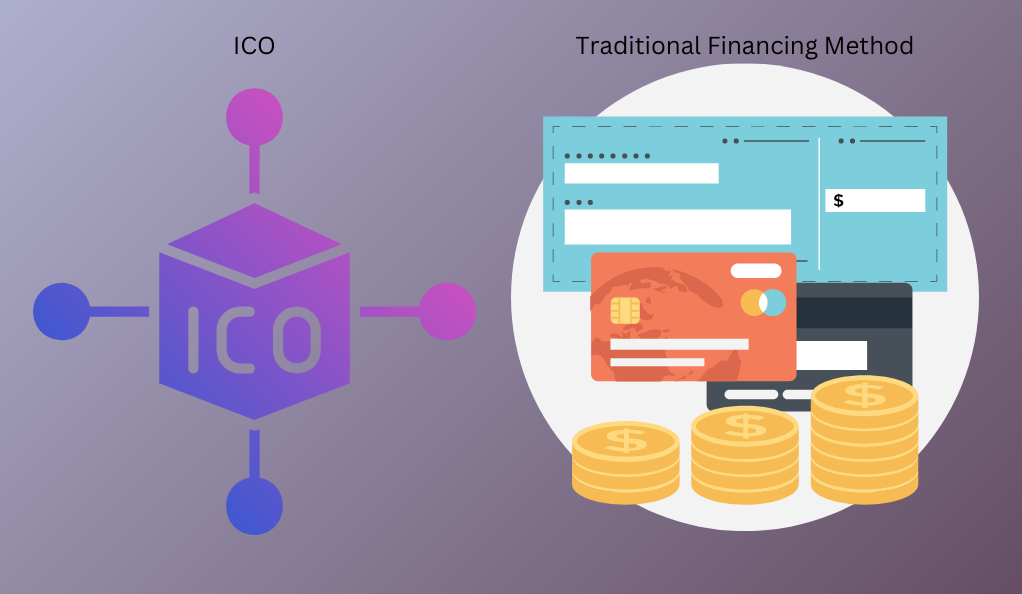Initial Coin Offerings (ICOs) have emerged as a revolutionary method of raising capital in the digital age. By leveraging blockchain technology, ICOs offer a unique blend of opportunities and challenges that both investors and regulators need to understand. This article delves deep into the world of ICOs, exploring their potential, inherent risks, and the evolving regulatory landscape.
What are ICOs?
ICOs, often likened to the traditional Initial Public Offerings (IPOs), are fundraising mechanisms where new cryptocurrencies or tokens are sold to investors. Unlike IPOs, which offer shares in a company, ICOs provide tokens that can serve various purposes within a blockchain project.
Table 1: ICOs vs. IPOs
| Feature | ICOs | IPOs |
|---|---|---|
| Nature of Offering | Tokens | Company Shares |
| Regulation | Often unregulated | Heavily regulated |
| Access | Global | Often restricted to specific regions |
| Purpose | Fundraising for a project | Raising capital for company expansion |
Opportunities Presented by ICOs
- Global Reach: ICOs can be accessed by investors worldwide, democratizing the investment process.
- Innovation Funding: They provide a platform for innovative projects to secure funding that might be challenging through traditional means.
- Liquidity: Tokens can often be traded on cryptocurrency exchanges, providing liquidity to investors.
Risks Associated with ICOs
- Lack of Regulation: The absence of a standardized regulatory framework can expose investors to fraudulent schemes.
- Market Volatility: The value of tokens can be highly volatile, leading to significant financial losses.
- Information Asymmetry: Project developers might have more information than investors, leading to potential misuse.
Regulatory Challenges
Regulators worldwide are grappling with the rapid rise of ICOs. The primary challenge is striking a balance between fostering innovation and protecting investors.
- Defining Tokens: Are they securities, commodities, or a new asset class?
- Investor Protection: Ensuring that ICOs provide accurate information and don’t mislead potential investors.
- Anti-Money Laundering (AML): Ensuring that ICOs aren’t used for illegal activities.
Comparison Table: Regulatory Stance on ICOs
| Country | Stance on ICOs |
|---|---|
| USA | ICOs may be considered securities and fall under SEC regulations. |
| China | ICOs are banned. |
| Singapore | Welcomes ICOs but requires them to be registered. |
| UK | ICOs are under scrutiny, and regulations are evolving. |
Opportunities Presented by ICOs

Democratization of Financial Investments
In the annals of financial history, the domain of investments has predominantly been an exclusive arena. Traditionally, it was a space where only the elite—comprising institutional investors, venture capitalists, and individuals with significant wealth—could play a decisive role. Yet, with the advent of Initial Coin Offerings (ICOs), this long-standing narrative is undergoing a transformative shift.
Open Access
The digital age, characterized by its interconnectedness, has paved the way for ICOs to champion a more inclusive approach to investments. Unlike the conventional avenues, which often come with geographical or financial constraints, ICOs are universally accessible. All that’s required is an internet connection and a digital wallet. This democratized access ensures that the world of investments is no longer a closed door but an open field, where anyone, irrespective of their financial standing, can participate and potentially reap the benefits of groundbreaking projects.
Lower Entry Barriers
The traditional investment landscape is often marked by towering entry barriers. These barriers manifest both in terms of the capital required to make a meaningful investment and the regulatory hoops one needs to jump through. ICOs, in stark contrast, have revolutionized this aspect. They introduce the concept of micro-investments, allowing individuals to invest with as little as a few dollars. This approach not only broadens the investor base but also ensures that the average individual isn’t sidelined but has an active role to play in shaping the future of innovative projects.
Direct Interaction with Innovators
One of the standout features of ICOs is the direct bridge they establish between investors and innovators. Traditional investment mechanisms often involve intermediaries, which can sometimes dilute the essence of a project. ICOs, however, provide a platform where investors can directly engage with project developers. This direct interaction fosters a sense of community, where both parties are aligned in their vision and objectives. It ensures that investors are not just passive participants but active stakeholders, contributing not just with their capital but also with their insights and feedback.
Global Reach and Potential for Innovative Ideas
ICOs are not bound by geographical constraints, making them truly global phenomena.
- Borderless Investments: An individual in Asia can invest in an ICO based in Europe with ease. This global reach ensures that projects can tap into a diverse pool of investors, bringing in varied perspectives and expertise.
- Fostering Innovation: With a global audience, ICOs attract a wide range of innovative ideas from different cultures and backgrounds. This diversity is a breeding ground for groundbreaking solutions to global challenges.
- Rapid Fundraising: Given their global nature, ICOs can raise funds quickly, ensuring that innovators have the necessary capital to bring their visions to life without undue delays.
The Role of Blockchain Technology in ICOs
At the heart of ICOs lies blockchain technology, a decentralized ledger system that ensures transparency, security, and trust.
- Transparency and Trust: Every transaction in an ICO is recorded on the blockchain, ensuring that investors can track their investments and any changes made in real-time. This transparency fosters trust between the project developers and investors.
- Decentralization: Unlike traditional fundraising methods, ICOs are decentralized, meaning they are not controlled by any single entity. This decentralization reduces the chances of manipulation and fraud.
- Smart Contracts: These are self-executing contracts with the terms of the agreement directly written into code. In the context of ICOs, smart contracts automate and streamline the investment process, ensuring that funds are released only when specific conditions are met.
The Risks Associated with ICOs
Information Asymmetry and the Challenges It Poses
In the realm of ICOs, information asymmetry refers to the imbalance of knowledge between project developers and potential investors.
Unequal Distribution of Information
The heart and soul of any ICO project lie in its vision, technical foundation, and the roadmap to achieve its objectives. While project developers, being the architects of the initiative, have an in-depth understanding of every nuance, the same depth of knowledge might not always be relayed to potential investors. This disparity often stems from either a conscious withholding of information or an unintentional oversight. Regardless of the cause, this unequal distribution can leave investors in the dark about certain risks, challenges, or intricacies, potentially affecting their investment decisions.
Misleading Whitepapers
The whitepaper of an ICO serves as its manifesto. It’s the document that investors turn to for a comprehensive understanding of the project’s goals, technical underpinnings, tokenomics, and more. Given its significance, the accuracy and clarity of a whitepaper are paramount. However, the ICO landscape has witnessed instances where whitepapers, instead of being beacons of transparency, have become tools of embellishment. Whether it’s through exaggerated claims, omitted risks, or misrepresented data, misleading whitepapers can paint an unrealistically rosy picture of the project, luring unsuspecting investors into potentially risky ventures.
Decision-making Disparities
The culmination of information asymmetry is most evident in the decision-making process of investors. Armed with incomplete, skewed, or sometimes misleading information, investors are at a disadvantage. Their decisions, instead of being rooted in comprehensive knowledge, might be based on fragmented insights. This disparity in decision-making can lead to misaligned expectations and, in unfortunate scenarios, significant financial losses. It underscores the need for transparency and open channels of communication between project developers and investors, ensuring that all stakeholders are on the same page.
The Volatility of Cryptocurrencies
Cryptocurrencies, the primary medium of investment in ICOs, are known for their price volatility.
- Price Fluctuations: The value of cryptocurrencies can experience significant fluctuations within short time frames, influenced by factors like market sentiment, regulatory news, and macroeconomic indicators.
- Liquidity Concerns: While some tokens gain traction and are listed on major exchanges, others might face liquidity issues, making it challenging for investors to sell or trade them.
- Market Manipulation: The cryptocurrency market, being relatively young, is susceptible to manipulative tactics like “pump and dump,” where prices are artificially inflated to attract unsuspecting investors.
Potential for Fraud and Lack of Transparency
The decentralized and often unregulated nature of ICOs can sometimes be a breeding ground for fraudulent activities.
- Scam ICOs: There have been instances where ICOs were set up with the sole intention of defrauding investors. Once funds are raised, the project developers disappear without a trace.
- Lack of Regulatory Oversight: Many ICOs operate in a regulatory gray area, which means there’s limited legal recourse for investors in case things go awry.
- Opaque Operations: Some ICOs do not maintain transparency in their operations, making it difficult for investors to ascertain the project’s legitimacy or progress.
Regulatory Challenges and ICOs
The Current Regulatory Landscape for ICOs

The regulatory stance on ICOs varies significantly across different jurisdictions, reflecting a combination of enthusiasm, caution, and skepticism.
- Diverse Approaches: While some countries, like Switzerland and Singapore, have adopted a more open approach to ICOs, others, such as China and South Korea, have imposed outright bans.
- Evolving Regulations: Given the nascent nature of ICOs, many regulatory frameworks are still in flux. Countries like the USA, through the Securities and Exchange Commission (SEC), are continually refining their stance, often classifying tokens as securities.
- Jurisdictional Overlaps: ICOs often transcend traditional geographical boundaries, leading to potential jurisdictional overlaps and conflicts, complicating regulatory efforts.
Challenges in Creating a Standardized Regulatory Framework
Crafting a one-size-fits-all regulatory framework for ICOs is a Herculean task, given their unique nature and global reach.
- Varied Nature of Tokens: Not all tokens are the same. While some represent a stake in a project (akin to securities), others might offer access to a particular service or platform. This diversity makes standardization challenging.
- Global Reach vs. Local Regulations: ICOs inherently possess a global character, accessible to anyone with an internet connection. However, regulations are often local, leading to potential mismatches and enforcement challenges.
- Rapid Technological Evolution: The world of blockchain and cryptocurrencies is evolving at a breakneck pace. Regulatory bodies often find themselves playing catch-up, striving to create rules for a landscape that’s continually shifting.
The Balance Between Innovation and Investor Protection
At the heart of the regulatory conundrum lies a fundamental challenge: How to strike a balance between promoting innovation and safeguarding investors?
- Fostering Innovation: Overly stringent regulations might stifle innovation, depriving the world of potentially transformative projects and solutions. A delicate touch is required to ensure that genuine innovators can thrive.
- Protecting Investors: At the same time, the primary role of regulatory bodies is to protect investors from potential fraud, misinformation, and financial losses. Ensuring transparency, accountability, and proper disclosure is paramount.
- Educating the Public: An informed investor is a protected investor. Regulatory bodies also face the challenge of educating the public about the intricacies, potential rewards, and risks associated with ICOs.
Success Factors of ICO Projects
The Importance of a Well-Structured and Informative Whitepaper
At the heart of any ICO lies its whitepaper—a document that outlines the project’s objectives, technical details, team, tokenomics, and more.
- Blueprint of the Project: A whitepaper serves as the project’s blueprint, providing potential investors with insights into the project’s vision, goals, and implementation strategy.
- Building Credibility: A detailed and transparent whitepaper can significantly enhance the project’s credibility, assuring investors of the team’s seriousness and commitment.
- Addressing Investor Concerns: A well-crafted whitepaper preemptively addresses potential concerns and questions, reducing uncertainties and building investor confidence.
Proximity to Markets with High Availability of Financial and Human Capital
The location and accessibility to key markets can play a pivotal role in the success of an ICO.
- Access to Funding: Being close to financial hubs ensures easier access to investors, financial institutions, and other key stakeholders crucial for the project’s success.
- Talent Acquisition: Proximity to markets rich in human capital allows ICO projects to attract and retain top-tier talent, from blockchain developers to marketing experts.
- Networking Opportunities: Being in or near major cities or tech hubs provides ample networking opportunities, from industry conferences to investor meet-ups, further bolstering the project’s prospects.
The Role of Social Media and Human Capital in ICO Success
In today’s digital age, the role of social media and the people behind the project cannot be overstated.
Community Building
Successful ICOs often have strong online communities, from Telegram groups to Twitter followers. These communities not only provide feedback but also play a crucial role in promoting the ICO to a broader audience.
Transparency and Engagement
Regular updates, AMAs (Ask Me Anything sessions), and interactive discussions on platforms like Reddit and Medium enhance transparency and foster trust.
The Team’s Expertise
The expertise, experience, and credibility of the team behind the ICO are often seen as indicators of the project’s potential. A team with a proven track record can significantly boost investor confidence.
Comparing ICOs with Traditional Financing Methods

ICOs vs. Initial Public Offerings (IPOs)
Initial Public Offerings (IPOs) represent a company’s first sale of stock to the public, marking its transition from a private entity to a publicly-traded one.
- Similarities:
- Both ICOs and IPOs are means of raising capital from the public.
- They both involve a detailed disclosure of the project or company’s details, either through a whitepaper (ICOs) or a prospectus (IPOs).
- Differences:
- Nature of Offering: While IPOs offer shares representing ownership in a company, ICOs offer tokens that might have varied utilities or rights.
- Regulation: IPOs are heavily regulated with stringent requirements, while ICOs often operate in a more regulatory gray area.
- Accessibility: IPOs might have restrictions based on investor accreditation or geography, whereas ICOs are typically more globally accessible.
ICOs vs. Venture Capital
Venture Capital involves private equity investment in startups with high growth potential in exchange for equity.
- Similarities:
- Both ICOs and venture capital aim to raise funds for projects or companies in their early stages.
- Both mechanisms involve a pitch to potential investors, highlighting the project’s potential and roadmap.
- Differences:
- Investor Base: While venture capital is sourced from institutional investors and high-net-worth individuals, ICOs are open to a broader range of investors.
- Equity vs. Tokens: Venture capitalists receive equity in the company, whereas ICO participants receive tokens.
- Duration: Venture capital fundraising can be a lengthy process, while ICOs can be relatively quicker due to their global reach.
ICOs vs. Crowdfunding
Crowdfunding is a method where projects raise small amounts of money from a large number of people, typically via online platforms.
- Similarities:
- Both ICOs and crowdfunding are democratized forms of fundraising, allowing a wide range of individuals to participate.
- Both mechanisms leverage the power of the internet and social media for promotion and outreach.
- Differences:
- Returns: In crowdfunding, backers might receive a product or service in return for their contribution, while ICO participants receive tokens.
- Regulation: Crowdfunding regulations vary by country but are typically more established than those for ICOs.
- Scope: While crowdfunding is often used for a wide range of projects, from artistic endeavors to product launches, ICOs are primarily used for blockchain-based projects.
The Future of ICOs
Predictions Based on Current Trends and Challenges
Increased Regulation
Given the challenges and concerns associated with ICOs, especially around investor protection, it’s anticipated that there will be a surge in regulatory measures across jurisdictions. This could lead to a more standardized and safer environment for ICOs, potentially boosting investor confidence.
Quality Over Quantity
The ICO boom saw a plethora of projects, not all of which were genuine or viable. As the ecosystem matures, there’s an expectation that the number of ICOs might decrease, but the quality and viability of projects will increase.
Integration with Traditional Finance
As ICOs gain more mainstream acceptance, there might be a convergence with traditional financial systems. We could see hybrid models where elements of ICOs are integrated into conventional fundraising methods.
Technological Advancements
The blockchain technology underpinning ICOs is rapidly evolving. Future ICOs might leverage advancements in blockchain scalability, interoperability, and security, leading to more robust and diverse offerings.
The Potential for ICOs in Reshaping the Financial Landscape
- Democratizing Capital Access: ICOs have the potential to further democratize access to capital, allowing innovators from any part of the world to raise funds for their ideas. This could lead to a more inclusive and diverse financial ecosystem.
- Redefining Investor Relations: The direct interaction between project developers and investors in the ICO space could reshape investor relations, fostering more transparency, trust, and community-driven decision-making.
- New Financial Instruments: The tokenomics inherent to ICOs introduce a range of new financial instruments. From utility tokens to security tokens, these new instruments could diversify investment portfolios and offer unique risk-reward profiles.
- Global Financial Integration: ICOs operate on a global scale, transcending traditional geographical and regulatory boundaries. This could lead to a more integrated global financial system, where capital flows more freely across borders.
Conclusion
The trajectory of Initial Coin Offerings (ICOs) represents a fascinating blend of innovation, opportunity, and challenge. As they continue to carve out their niche in the financial tapestry, ICOs stand as a testament to the transformative power of technology and the evolving dynamics of capital formation. Their future, influenced by regulatory shifts, technological advancements, and market demands, holds the promise of reshaping the very foundations of the financial landscape. As we navigate this evolving terrain, the true potential of ICOs will be unveiled not just as a fundraising mechanism but as a catalyst for global financial integration and democratization.
At bitvestment.software, our commitment is to deliver unbiased and reliable information on subjects like cryptocurrency, finance, trading, and stocks. It's crucial to understand that we are not equipped to offer financial advice, and we actively encourage users to conduct their own comprehensive research.
Read More